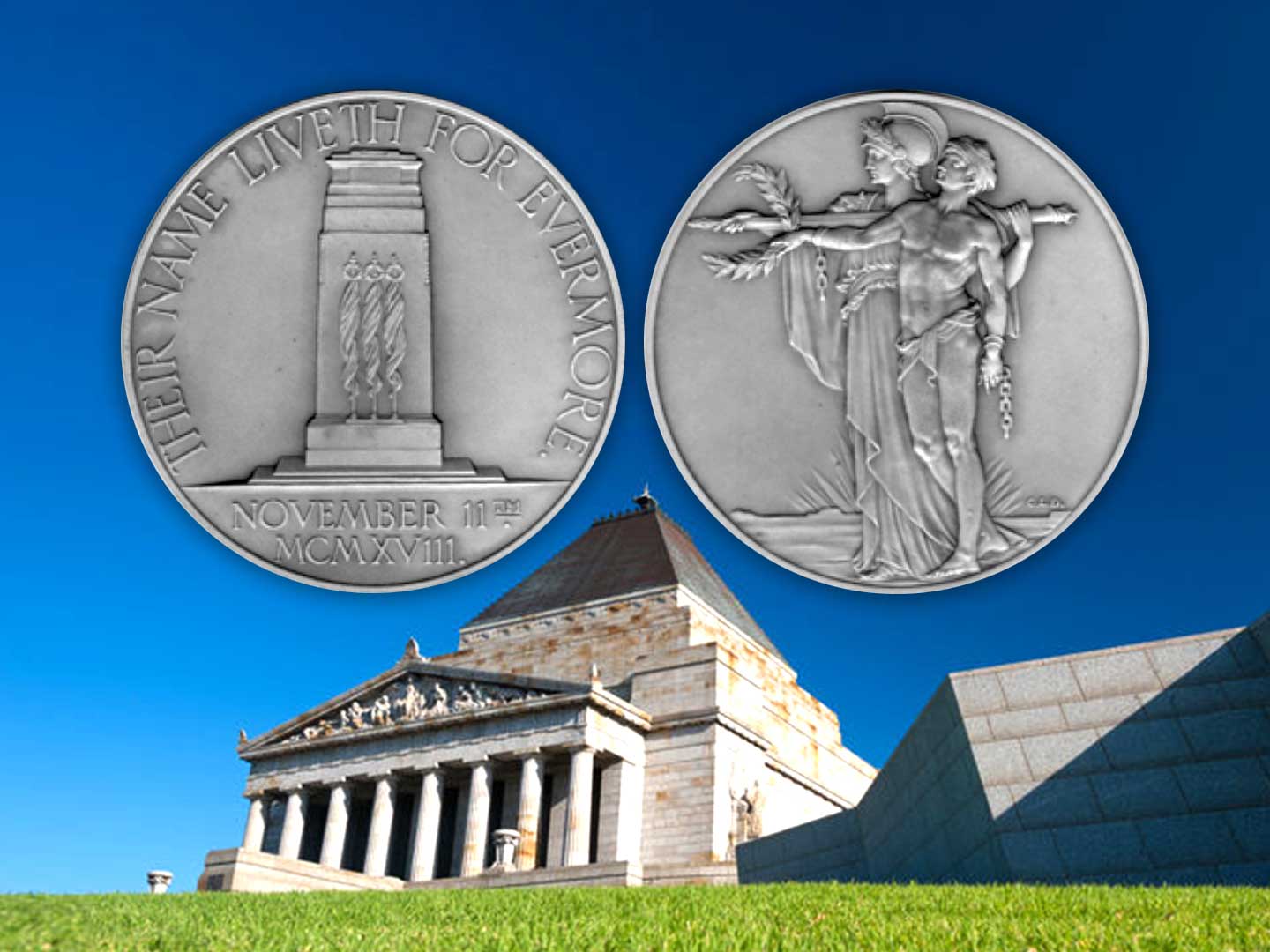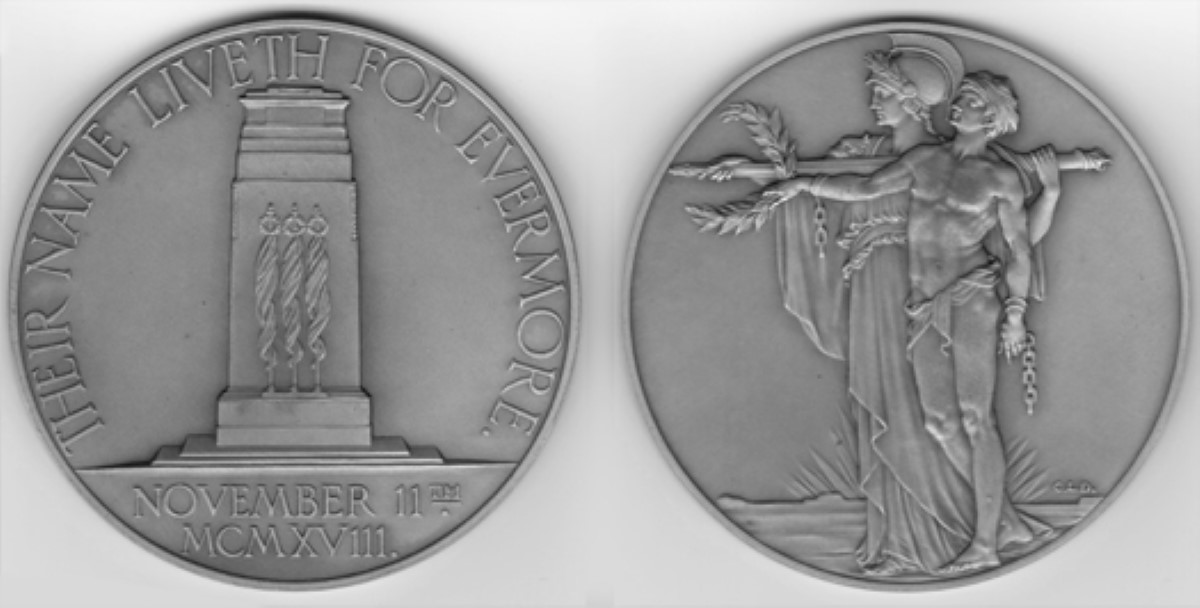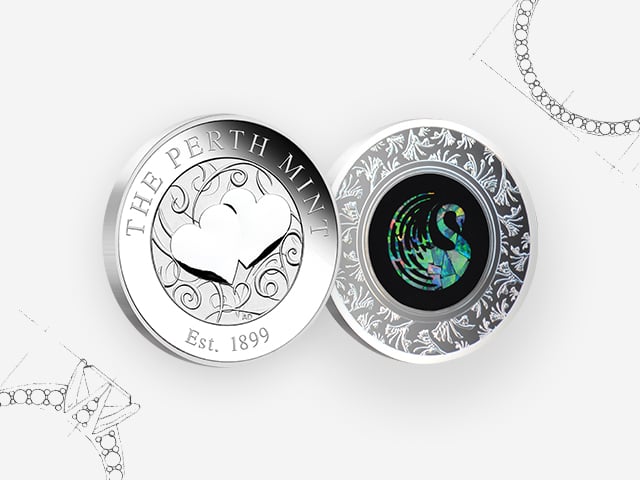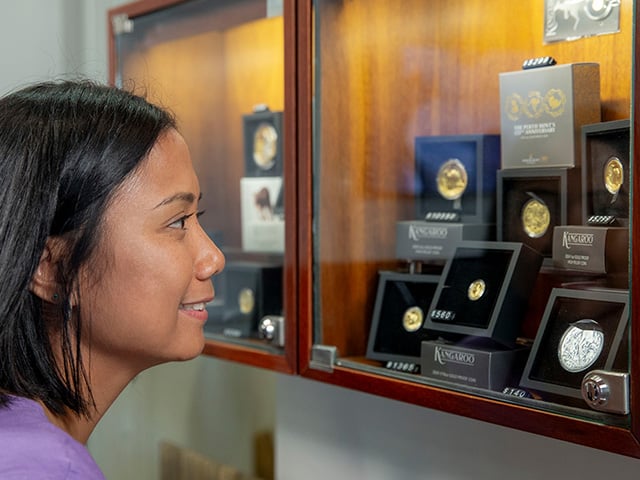How Armistice Anniversary medals found sanctuary at Shrine of Remembrance

Keen eyed visitors to Melbourne’s Shrine of Remembrance may have noticed two large medals mounted at the entrance to the Inner Shrine, also known as the Sanctuary.
They are in fact the obverse and reverse of Charles Doman’s Armistice Anniversary medal, struck by the British Royal Mint for issue in 1928.
Portraying Edwin Lutyens’ Cenotaph in Whitehall, and a figure of Britannia supporting a young warrior with a sheathed sword, just 7,000 of these medals were produced in a variety of metals.
Few are known to have reached Australian shores. Among those that did, versions are held by The Perth Mint and by Museum Victoria, but the precious silver examples to be found at Melbourne’s Shrine of Remembrance probably have a more interesting history.
These are the medals that were presented to the committee overseeing the construction of the Shrine in 1930 by the then Deputy-Master of the Melbourne Branch of the Royal Mint, W.M. Robins.
Robins had high regard for Doman’s work, noting the common meaning in the medal design and the intended purpose of the new Shrine. In the new era of peace, those who had served in the War were to be supported, while those who gave their lives were honoured and remembered.
 Image: Glenn Burghall
Image: Glenn Burghall
According to Robins1, the medal “was beautiful in conception and elegant in execution and design”. So impressed was he by the symbolism that he suggested to General Sir John Monash that Doman’s “exquisite production” should be incorporated in some way in the decorative scheme of the Shrine. The suggestion was favourably received and subsequently approved.
It is appropriate that the face of the medal depicting the Cenotaph is mounted closest to Melbourne’s city centre. Here, on the steps of the Parliament in Spring Street, a half-sized replica Cenotaph made of plaster and wood was erected prior to the Anzac Day Parade of 1926. In the years before the completion of a permanent memorial, this temporary structure played an important role in the community’s commemorations.
Though the Whitehall Cenotaph is inscribed with the words ‘THE GLORIOUS DEAD’, Doman preferred the biblical inscription ‘THEIR NAME LIVETH FOR EVERMORE’ for his medal. These words are also found on Stone of Remembrance monuments at Commonwealth battlefield cemeteries all across the Western Front. Thus he adeptly linked the final resting places of the fallen to the memorial at home where Australians went to grieve and remember them.
Newspapers in Australia featured widespread coverage of the Royal Mint’s release of the Armistice Anniversary medal, providing detailed descriptions of Doman’s designs and their meaning. It is worth noting that the sculptor’s initials ‘C.L.J.D.’ appeared on an early version of his depiction of the Cenotaph. They were removed from his final rendition, however, resulting in the work being incorrectly attributed to another artist.
1 Royal Mint’s 60th Annual Report (1929)
- By Glenn Burghall











